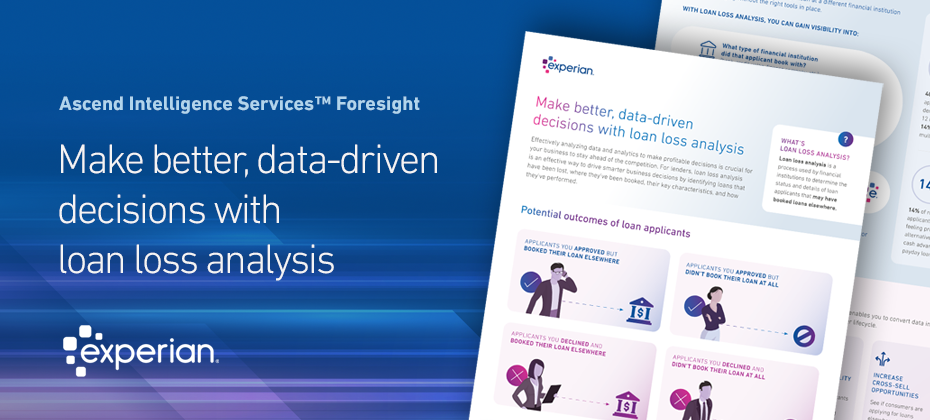Many organizations commit to diversity, equity, and inclusion (DEI) policies and practices to build a more diverse and just workplace. Organizations that live by these values ensure they’re reflected in the products and services they offer, and in how they attract and interact with customers. For financial institutions, there could be a direct link between their DEI efforts and financial inclusion, which can open up growth opportunities.
Defining DEI and financial inclusion
DEI and financial inclusion aren’t new concepts, but it’s still important to understand how organizations are using these terms and how you might define a successful outcome.
What is DEI?
DEI policies help promote and support individuals and groups regardless of their backgrounds or differences. In the Experian 2022 Diversity, Equity and Inclusion Report, we define these terms more specifically as:
- Diversity: The presence of differences that may include thought, style, sexual orientation, gender identity/expression, race, ethnicity, dis(ability), culture, and experience.
- Equity: Promoting justice, impartiality, and fairness within the procedures, processes, and distribution of resources by institutions or systems.
- Inclusion: An outcome to ensure those who self-identify as diverse feel and are welcomed. You meet your inclusion outcomes when you, your institution, and your programs are inviting to all.
We also recognize the importance of belonging, or “a sense of fitting in or feeling you are an important member of a group.”
A company’s DEI strategy might include internal efforts, such as implementing hiring and promotion practices to create a more diverse workforce, and supporting employee resource groups to foster a more inclusive culture. Companies can also set specific and trackable goals, such as Experian’s commitment to increase its representation of women in senior leadership roles to 40 percent by 2024.1
But DEI efforts can expand beyond internal workforce metrics. For example, you might review how the products or services you sell — and the messaging around those offerings — affect different groups. Or consider whether the vendors, suppliers, nonprofits, communities, and customers you work with reflect your DEI strategy.
What is financial inclusion?
Financial inclusion is less specific to a company or organization. Instead, it describes the strategic approach and efforts that allow people to affordably and readily access financial products, services, and systems.
Financial institutions can promote financial inclusion in different ways. A bank can change the requirements or fees for one of its accounts to better align with the needs of people who are currently unbanked. Or it can offer a solution to help people who are credit invisible or unscoreable by conventional scoring models establish their credit files for the first time.
For example, Mission Asset Fund, a San Francisco-based nonprofit, organizes credit-building lending circles that have historical roots in savings programs from around the world. Participants can use them to build credit without paying any interest or fees. In particular, the organization focuses on helping immigrants establish and improve their credit in the U.S.
Financial institutions are also using non-traditional data scoring to lend to applicants that conventional scoring models can’t score. By incorporating alternative credit data1 (also known as expanded FCRA-regulated data) into their marketing and underwriting, lenders can expand their lending universe without taking on additional risk.
READ MORE: Experian’s Improving Financial Health Report 2022 has many examples of internal products and external partnerships that help promote financial literacy and inclusion.
DEI and financial inclusion can complement each other
Although DEI and financial inclusion involve different strategies, there’s an undeniable connection that should ultimately be tied to a business’s overall goal and mission. The groups who are historically underrepresented and underpaid in the workforce also tend to be marginalized by the established financial system.
For example, on average, Black and Hispanic/Latino workers earn 76 percent and 73 percent, respectively, as much as white workers.2 And 27 percent of Black and 26 percent of Hispanic/Latino consumers are either credit invisible or unscoreable, compared to only 16 percent of white consumers.3
Financial institutions that work to address the inequities within their organizations and promote financial inclusion may find that these efforts complement each other.
During a webinar in 2022 discussing how financial growth opportunities can also benefit underserved communities, Experian asked participants what they thought was the greatest business advantage of executing financial inclusion in their financial institution or business.
The majority of respondents (78 percent) chose building trust and retention with customers and communities — undoubtedly an important outcome. But the second most popular choice (14 percent) was enhancing their brand and commitment to DEI, highlighting how these efforts can be interconnected.4
By building a more diverse workforce, organizations can also bring on talent that better relate to and understand consumers who weren’t previously part of the company’s target market. If the company culture supports a range of ideas, this can unlock new ways to propel the business forward. In turn, employees can be more engaged and excited about their work.
Find partners that can help you succeed
Setting measurable outcomes for your DEI and financial inclusion efforts and tracking your progress can be an important part of implementing successful programs. But you can also leverage partnerships to further define and achieve your goals.
Experian launched Inclusion ForwardTM with these partnerships in mind. Building on our commitment to DEI and financial inclusion, we offer various tools to help consumers build and understand their credit and to help financial institutions reach underserved communities.
Products like Experian GoTM and Experian BoostTM help consumers establish their credit file and add positive utility, rent, and streaming service payments to their Experian credit report. Lenders can benefit from access to various non-traditional credit data and expanded FCRA-regulated scoring models, including Experian’s Lift PremiumTM, which can score 96 percent of U.S. adults.
Whether you’ve established your strategy and need help with implementation or are at the starting stages, Experian can help you promote DEI and enhance your financial inclusion efforts.
Learn more about driving financial inclusion to bring change



